In San Francisco, two high-profile transit projects have connected communities and sped up Bay Area residents’ commutes, achieving a transit agency’s commitment to system investments
DESIGNER
2024
The San Francisco Municipal Transportation Agency (SFMTA) was established in 1999 by a voter mandate. It aggregated several San Francisco city agencies, assuming oversight of public transit, as well as bicycling, paratransit, parking, traffic, walking and taxis and is now the nation’s seventh-largest transit system.
Two recent capital projects demonstrate the SFMTA’s consistent system investments by strengthening San Francisco’s Muni Metro transit system and improving the options available to the communities it serves.
Central Subway Extension
The Loma Prieta earthquake in 1989 severed the freeway connection to San Francisco’s Chinatown. Shortly thereafter, then-mayor Willie Brown pledged to restore rail service – which had been absent since 1951 – to the area’s residents.
Central Subway, San Francisco’s first new subway line in more than 40 years, is the fulfillment of that promise. Phase one of the project, completed in 2007, extended light rail to several communities of concern, but still had not reached Chinatown, then the densest community without rail service of any major city in the country. HNTB became involved in 2010 as final designer of the project’s second phase, a 1.7-mile extension that added four new stations, including one in Chinatown.
The November 2022 phase two opening extended the T Third Street light rail line, providing a direct rapid transit link that gives area residents better access to jobs, schools, shopping and sporting and cultural venues. It also provides convenient access to Bay Area Rapid Transit (BART) and Caltrain, the Bay Area’s two largest regional commuter rail services. In addition to Chinatown, the new line also serves the dense urban areas of Union Square and Market Street.
“Three of the four Central Subway stations are underground,” said Chuck Morganson, HNTB project manager. “This line was built right through the heart of several high-profile, very complex locations. New tunnels had to be excavated and built and utilities had to be moved within an already established framework of existing SFMTA and BART tunnel infrastructure, all without disrupting businesses and traffic flows throughout the area.”
HNTB’s role included conceptual, preliminary and final design, track and systems design, station architecture, design integration, quality assurance and community outreach support.
Central Subway Extension
- 7 miles
- 3 underground and 1 surface station
- FTA Full-Funding Grants Agreement - $948m
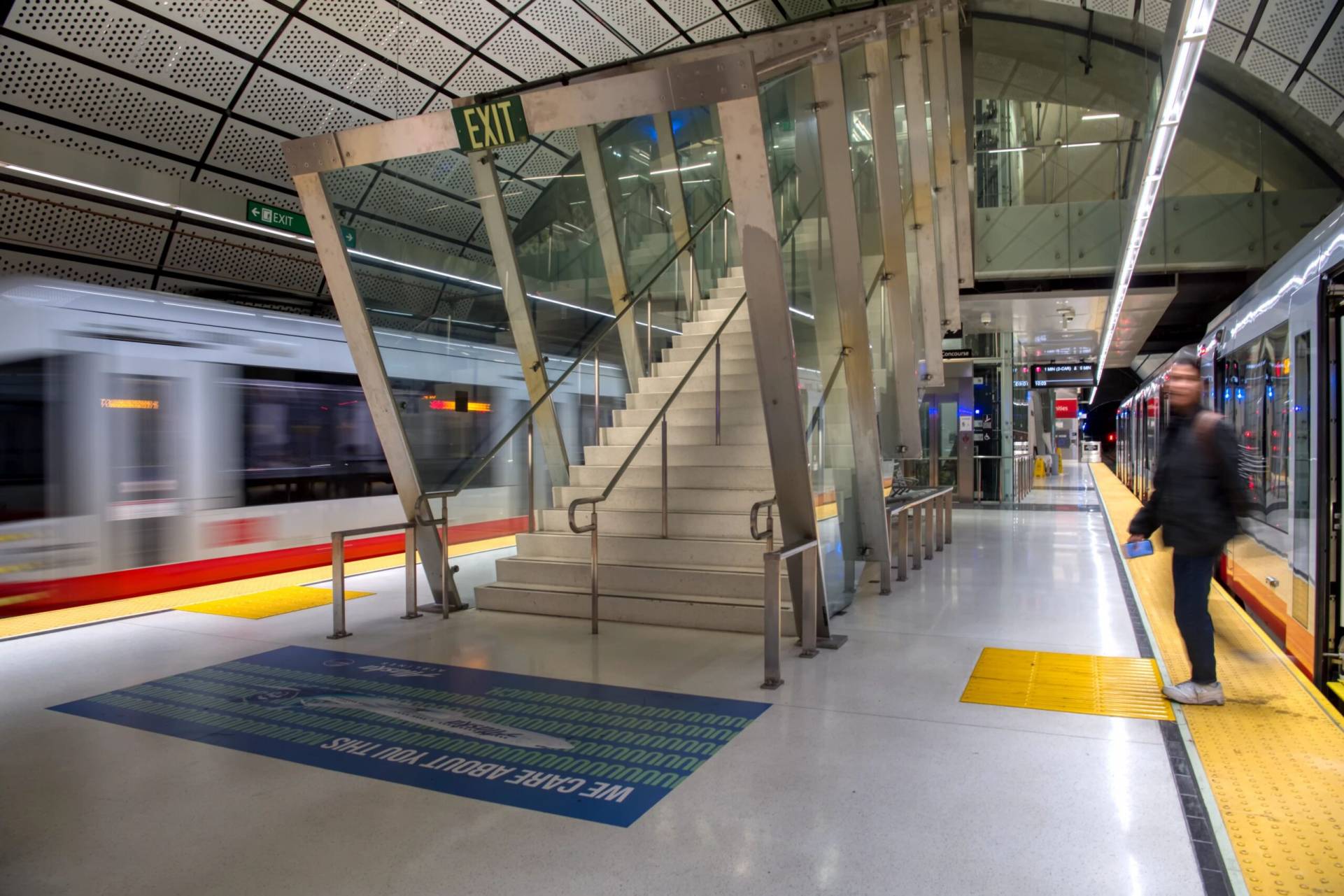
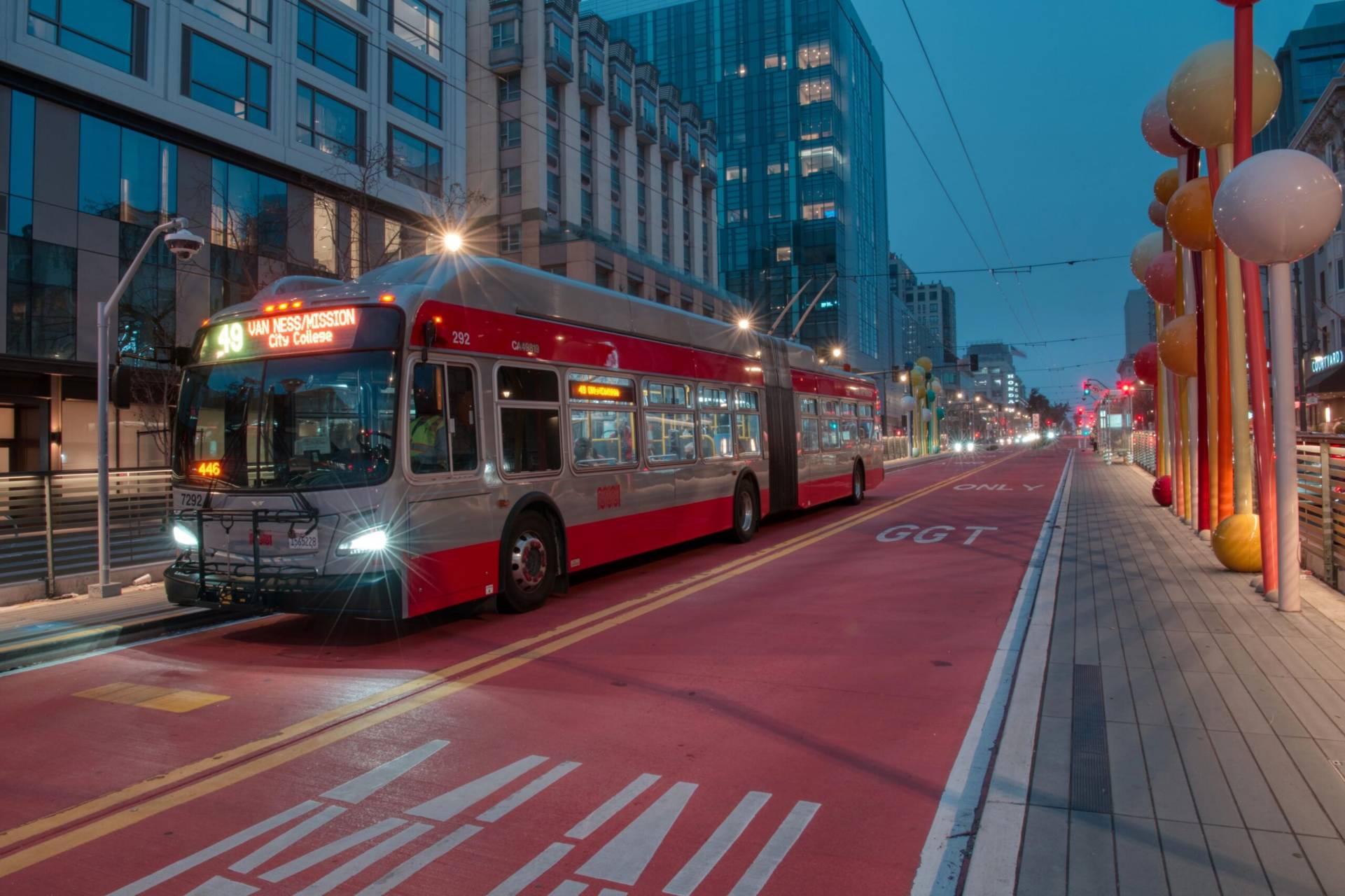
“HNTB has been a trusted and valued partner to SFMTA on the Central Subway contract for over 12 years. Their design support and timely responsiveness during construction has helped us move the project towards successful completion.”
“HNTB’s support in planning, estimating and scheduling made this project possible. Their work helped keep various funding agencies, including the FTA, and the public up to date with project status and events in the field. Their construction management efforts led to completing the project two months ahead of the targeted date.”
Service and Mobility Upgrades
Among HNTB’s responsibilities was management of an integrated systems replacement project and engineering to replace the outdated Muni communication systems within the existing metro subway. That work replaced monochrome red signs – that often displayed conflicting and incorrect information – with full-color passenger display train arrival and destination signs.
HNTB identified and implemented project cost savings of more than half a million dollars by reducing track centers and redesigning a special trackwork that replaced a diamond crossover with a universal crossover. Above ground, the changes further permitted tracks to be placed closer together in the street, providing additional width that supports emergency response vehicle access.
SFMTA’s new, state-of-the-art transportation management center, developed as part of the phase two Central Subway project, receives and disseminates real-time information to and from passengers, transit vehicles, field staff and partner transportation agencies. In support of the center’s development, HNTB completed a business process review of SFMTA’s management, operations, architectural and structural design, systems design and integration, scheduling and cost estimating. Capable of conducting real-time transportation management operations across modes and agency borders, the center provides the public with safe, reliable, responsive transportation services.
The opening of the Central Subway extension has, at last, brought vital mobility solutions from the south of the city through to Chinatown residents. Projected to serve more than 76,500 daily riders by 2030, the Central Subway accommodates both existing and future transit ridership with greater reliability, comfort and speed.
“HNTB has been a trusted and valued partner to SFMTA on the Central Subway contract for over 12 years. Their design support and timely responsiveness during construction has helped us move the project towards successful completion,” said Nadeem Tahir, SFMTA, program director, Central Subway Project. “As project manager, Chuck Morganson has been outstanding and has provided real value, bringing us the right people at the right time through final design and the complex trackwork and systems installation and testing phases.”
Van Ness Improvement Project
HNTB’s work on the Central Subway extension led to the firm’s selection as construction manager on SFMTA’s Van Ness Improvement Project, a first-of-a-kind project for San Francisco. The initiative delivered 2 miles of the city’s first dedicated, center-running bus rapid transit (BRT) lanes to the highly traveled U.S. 101 urban thoroughfare in the northeastern part of the city, an area long recognized as underserved by high-capacity transit. The project also included new signals at 32 intersections, sidewalk extensions and safety improvements, including high-visibility crosswalks and audible countdown signals.
Van Ness BRT
- City’s first dedicated, center-running BRT lanes
- 2 miles
- 9 stations
- 18 boarding platforms
- FTA Small Starts Grant Agreement - $75m
“Van Ness was more than a transit project, in a sense,” said Keiran Kelly-Sneed, HNTB client service leader. “It also was a sewer and water project. San Francisco is an old city with utilities in this area that are more than 100 years old. Since the streets needed to be dug up to create the bus lanes, the SFMTA recognized the once-in-a-generation opportunity to reconstruct the infrastructure beneath the bus lanes, as well. About half of the time required to complete the project involved these improvements that weren’t directly related to bus operations.”
The bus lanes were built after the completion of curb-to-curb utility replacements. Construction presented its own challenges, particularly with limited access to constrained sites along the corridor that were impacted by traffic control, limited work hours, ingress/egress, public safety and other concerns.
The COVID-19 pandemic, while introducing unprecedented challenges, also reduced traffic on the roadway, allowing the project team to gain access to larger portions of the corridor. In particular, the Mission intersection, a major, diamond-shaped connection point where five well-traveled city streets converged, benefited from those reduced traffic levels.
The work required at the intersection was extensive. Contract and traffic control restrictions indicated that up to eight weeks of periodic, partial closures would be necessary to complete the intersection improvements.
Those closures would have had significant traffic impacts. After 10 months of careful planning – and by taking advantage of decreased traffic levels – the expansive Mission intersection was completely rebuilt during just a five-day full closure.
The full closure at Mission allowed access to the Market Street intersection, another daunting reconstruction that had to be planned around the historic F-Line streetcar operating schedule. Complex repaving work at that intersection was completed inches from the existing streetcar tracks over two nights, avoiding impact to streetcar services.
The night work was performed concurrently with the ongoing Mission intersection work, as was more than $1 million of additional project work, further expanding the full closure’s benefit. The accelerated work at the two prominent intersections ramped up momentum, allowing the Van Ness project to be delivered about three months ahead of schedule and further demonstrating SFMTA’s commitment and prudent use of dollars to enhance its entire system.
“I want to thank the HNTB team,” said Peter Gabancho, SFMTA project manager. “Their support in planning, estimating and scheduling made this project possible. Their work helped keep various funding agencies, including the FTA, and the public up to date with project status and events in the field. Their construction management efforts led to completing the project two months ahead of the target date.”
Artistic Vibrancy in Central Subway
In addition to achieving a direct, rapid transit link between downtown San Francisco and some of the city’s most densely populated areas, the San Francisco Municipal Transportation Agency prioritized cultural benefits in the 1.7-mile Central Subway extension project.
Beginning in 2011, the San Francisco Arts Commission and the SFMTA awarded contracts to artists who were tasked with designing radiant artwork to be displayed in the subway extension as part of the Central Subway public art program. Artwork was commissioned through the city’s 2%-for-art program.
Twelve artists created 10 site-specific works that were installed inside and outside of the four new Central Subway stations. Ranging from large-scale photography, kinetic and traditional sculptures, murals and illuminated installations, the commissioned artworks each depict the character of the station neighborhood, its history and residents and the creativity and breadth of Bay Area contemporary arts. As designer for the above-ground station, HNTB integrated a kinetic sculpture into its station design.”
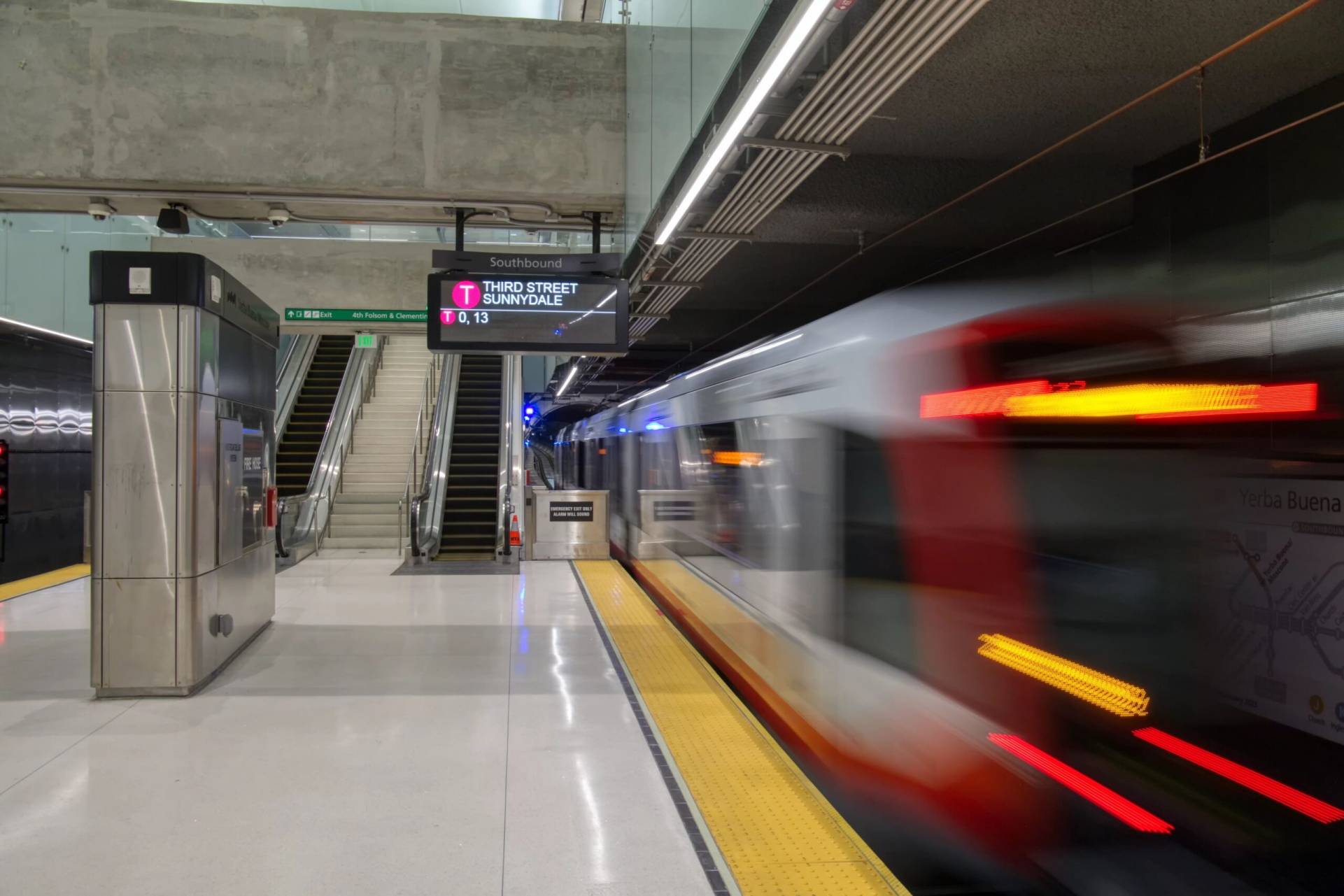
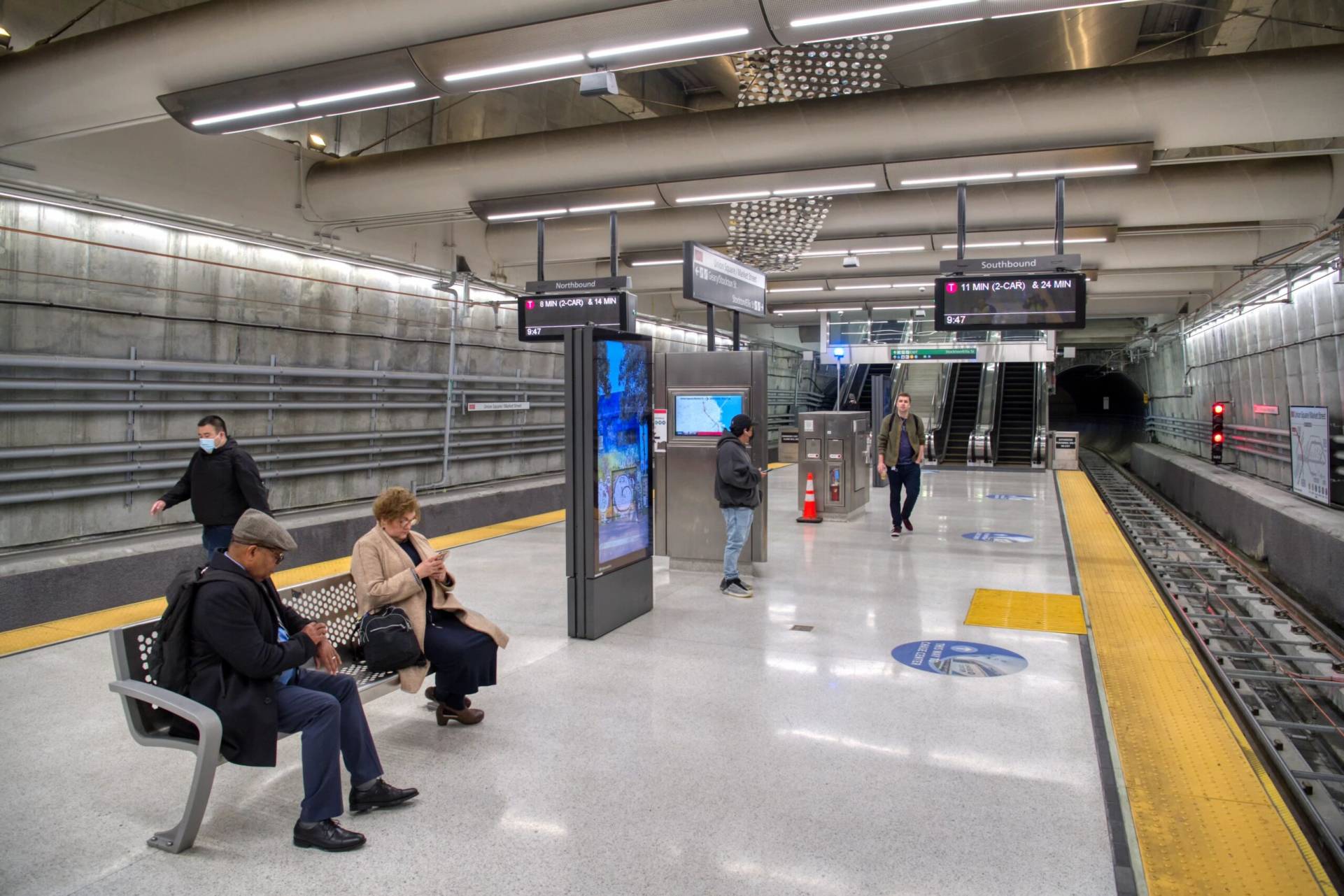
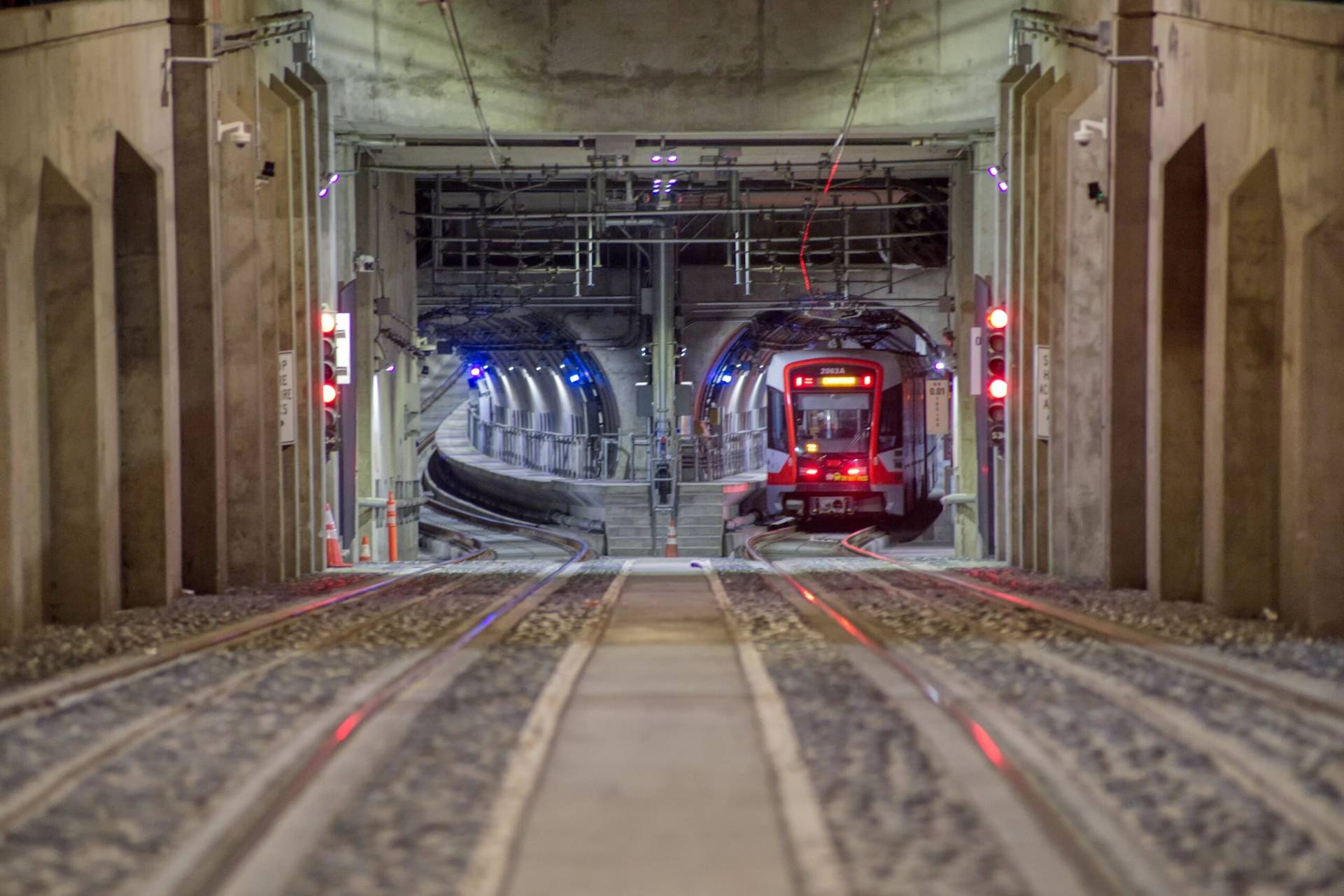
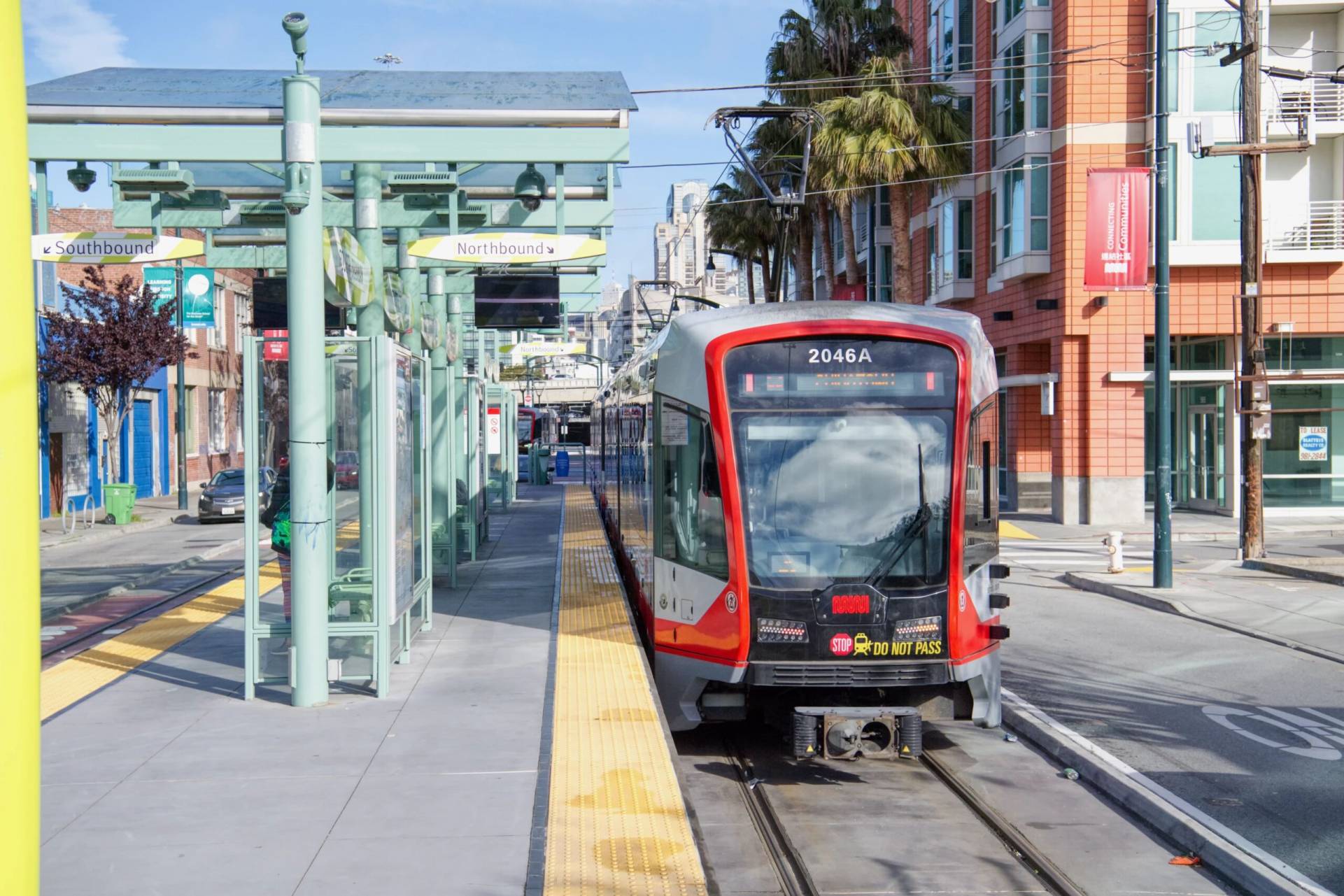
SEE MORE ARTICLES
MORE DESIGNER STORIES
Orlando International Airport Terminal C
Fish Passage
Denver International Airport A-West and B-West Concourses
CID Green Infrastructure Project
KC Levees Program
